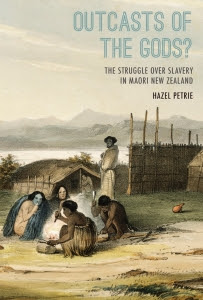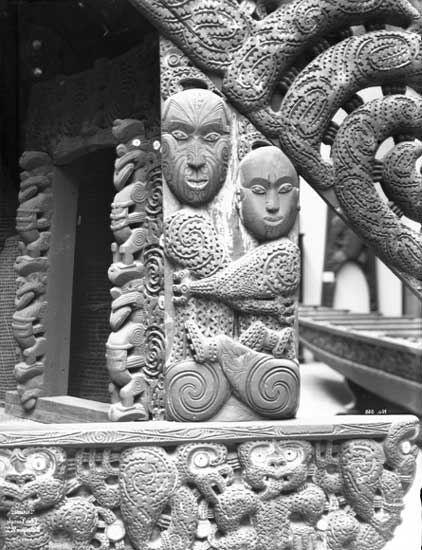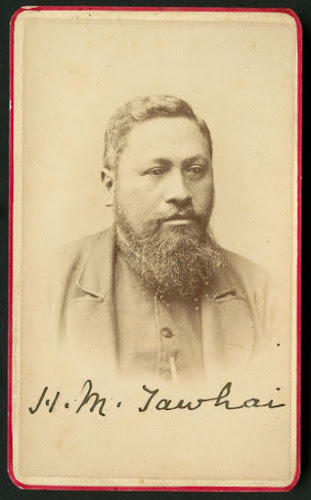Book Review: Hazel Petrie, "Outcasts of the Gods? The Struggle over Slavery in Māori New Zealand"
[The following review was first published in Metro magazine, October 2015.]
For most people
slavery conjures up images of cotton fields and sugar plantations, capricious
white masters, whippings and abject cruelty. Hazel Petrie’s new history of
Māori captivity opens with Jake the Muss from Once Were Warriors blaming his own violent tendencies on 500 years
of slavery and humiliation. Meanwhile, wife Beth observes that ‘Us Maoris used
to practise slavery just like them poor Negroes had to endure in America’. It
is a common assumption.
Except the reality, as
Petrie succeeds in showing, was considerably different. Although some Europeans
then and now liked to claim that Māori customs such as slavery were ended as a
result of exposure to a superior civilisation, the evidence suggests quite a contrary
and surprising chain of influence.
Once missionaries set
up shop in northern New Zealand from 1814 onwards, they attracted whalers and
others to the area, most of whom willingly traded muskets for pigs, potatoes,
timber, flax (and sex). That in turn encouraged a massive increase in the
number of war captives put to work in these areas, since the trade in goods and
services that they provided was crucial in acquiring even more muskets.
As Petrie and other
historians have argued, the subsequent period to about 1830 was an abnormal one
in terms of the sheer scale and extent of intertribal warfare. The widespread
release of captives that followed during the 1830s reflected the end of the
‘arms race’ between iwi. Easy conquests were no longer to be achieved once all
the tribes had their own guns, creating obvious incentives for the restoration
of peace. Christianity was sometimes helpful in achieving this outcome without
loss of face (or mana) by any of the parties. But it was usually not the
crucial driving factor.
Former slaves proved
adept traders in the new commercial environment, in part because they were
relieved of the communal obligations that chiefs bore to distribute wealth.
Free to accumulate capital, many also benefitted from their early embrace of religion
and literacy. In some regions former captives who had returned home introduced
the Bible to entire regions years before European missionaries ventured
anywhere near.
As for their actual
experiences of slavery, Petrie shows that this varied enormously. Most slaves
were not born that way but instead taken as captives. But not all prisoners
would be reduced to the status of slaves. Captive chiefs were often spared such
indignities and many resumed leadership roles upon return to their own tribes.
Mistreatment of those who were taken as slaves was widely frowned upon and the
slaves themselves often displayed a remarkable degree of independence from
their supposed masters.
Revealingly, some
former slaves preferred to remain with their host communities even after
release. And meanwhile, for all the pious humanitarian talk surrounding the
Treaty of Waitangi, its signing had no immediate impact on Māori slavery, which
continued in some places for two decades or more.
For Petrie it is a
moot point whether ‘slavery’ is even a valid description in the New Zealand
context given the variety of Māori experiences of captivity and the range of
Māori terms that can be used to describe their situations. That kind of nuance
might not have been appreciated by Jake or Beth. But it reflects what is without
doubt a carefully crafted and important history of Māori captivity.
Outcasts of the Gods? is published by Auckland University Press.




Comments
Post a Comment